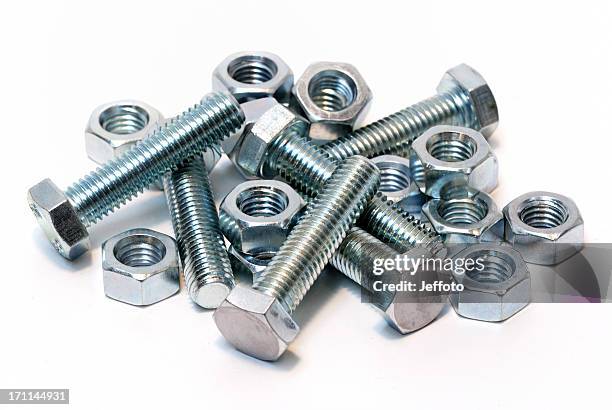Fasteners and Bolts in Everyday Life: More Than You Expect

When ponder about the parts that hold our environment together, hardware may not be the initial things that come to thought. Still, these simple yet vital fasteners play a key role in numerous applications, from the furniture we use to the transportation we drive. Grasping the variety and functionality of nuts and bolts can significantly enhance our capability to handle DIY projects, take on home improvement tasks, or even carry out regular automotive repairs.
In this comprehensive guide, we will explore the many types of nuts and bolts available, delving into their specific applications and advantages. If you are a seasoned builder or a interested novice, this guide aims to provide you with the knowledge you need to choose the right fasteners for your tasks. Let’s dive into the fascinating world of these fasteners and uncover how these humble components are more important in our daily lives than we might realize.
Understanding Nuts and Fasteners
Fasteners and nuts are vital fasteners employed extensively in multiple settings, spanning common domestic jobs to manufacturing applications. A bolt is commonly a long cylindrical piece of material with threads spiraling through its body, that allows it to be attached into a nut. Head Screws , commonly shaped like a hexagon in structure, attaches onto the spiraled tip of the bolt, forming a stable bond when secured. This basic but efficient system is crucial for binding elements together, guaranteeing sturdiness and strength in a large range of structures and tools.
Diverse types of fasteners and nuts serve specific purposes, and grasping their individual features can significantly boost your task efficacy. For instance, hex bolts are commonly used for routine construction, while carriage bolts are suitable for attaching timber to timber or steel. Lag bolts are purpose-built for high-stress tasks, commonly employed in framing or supporting applications. By choosing the suitable kind, you can enhance the dependability of your connections and avoid possible issues.
Additionally, the substances and coatings of fasteners and nuts are important elements to think about. Steel alloy offers superior corrosion resistance, which makes it suitable for exposed uses, while brass provides decent transfer in electronic tasks. Zinc-plated and galvanic choices are designed to combat rust and corrosion, lengthening the life of the fasteners. Each selection adds to the overall durability and effectiveness of your joint, and knowing the differences can help you formulate educated decisions as you approach multiple jobs in your home improvement or commercial tasks.
Types and Applications
In the process of selecting hardware for assignments, comprehending the various types of nuts and bolts and their designated applications is important. For instance, hex bolts are one of the most widely used fasteners in construction, due to their adaptability and high strength. They are well-suited for anchoring components in heavy-duty applications, while carriage bolts feature a circular head and are typically used in timber building. These options allow for custom solutions based on the material and requirements of the task at hand.
During automotive repairs, specific forms of nuts and bolts are crucial for guaranteeing safety and efficacy. For instance, flange nuts offer a larger bearing surface that disperses the load and lowers the risk of becoming loose, making them especially appropriate for high-vibration environments found in vehicles. Similarly, lock nuts are intended to stop self-loosening, providing an extra layer of protection to essential components within the automotive industry. Comprehending these differences helps technicians choose the appropriate fasteners for varied applications.
For DIY house improvement projects, the decision between wood and metal fasteners can considerably impact the result. Wood screws often call for specific screws that suit the material's properties, while metal projects benefit from more robust bolts with greater tensility. When preparing go to website , it’s important to consider both the context and engineering requirements, guaranteeing that the chosen nuts and bolts will perform consistently over the duration. Familiarity with these types and uses not only boosts task success but also nurtures a more profound appreciation for these fundamental components in routine life.
Materials and Specialty Fasteners
When choosing nuts and bolts, the materials they are composed of play a critical role in their efficacy and application. Steel fasteners offer robustness and resilience, making them ideal for a wide range of projects. For environments susceptible to rust, corrosion-resistant fasteners present a dependable choice due to their resistance to rust and decay. Copper and titanium are also popular alternatives, each bringing distinct properties such as lightweight applications and excellent corrosion resistance, respectively. Comprehending these materials helps guarantee the longevity of your projects.
Specialty fasteners are designed for specific applications and can make a significant difference in functionality. Tamper-proof nuts and bolts, for example, enhance security by preventing unauthorized access to units. Nylon lock nuts are another unique option, providing extra friction to resist loosening over time, which is particularly useful in vibration-prone environments. Recognizing when to use these specialized fasteners can help optimize the effectiveness of your construction or repair work.

Other specialty fasteners include expansion bolts and foundation bolts, both critical for securing fixtures to various substrates. Expanding bolts expand once inserted, providing maximum holding power, making them ideal for heavy loads. Foundation bolts play a crucial role in foundation work, ensuring stability and support for buildings. By choosing the appropriate specialty fastener for your needs, you can improve the overall quality and safety of your projects.
